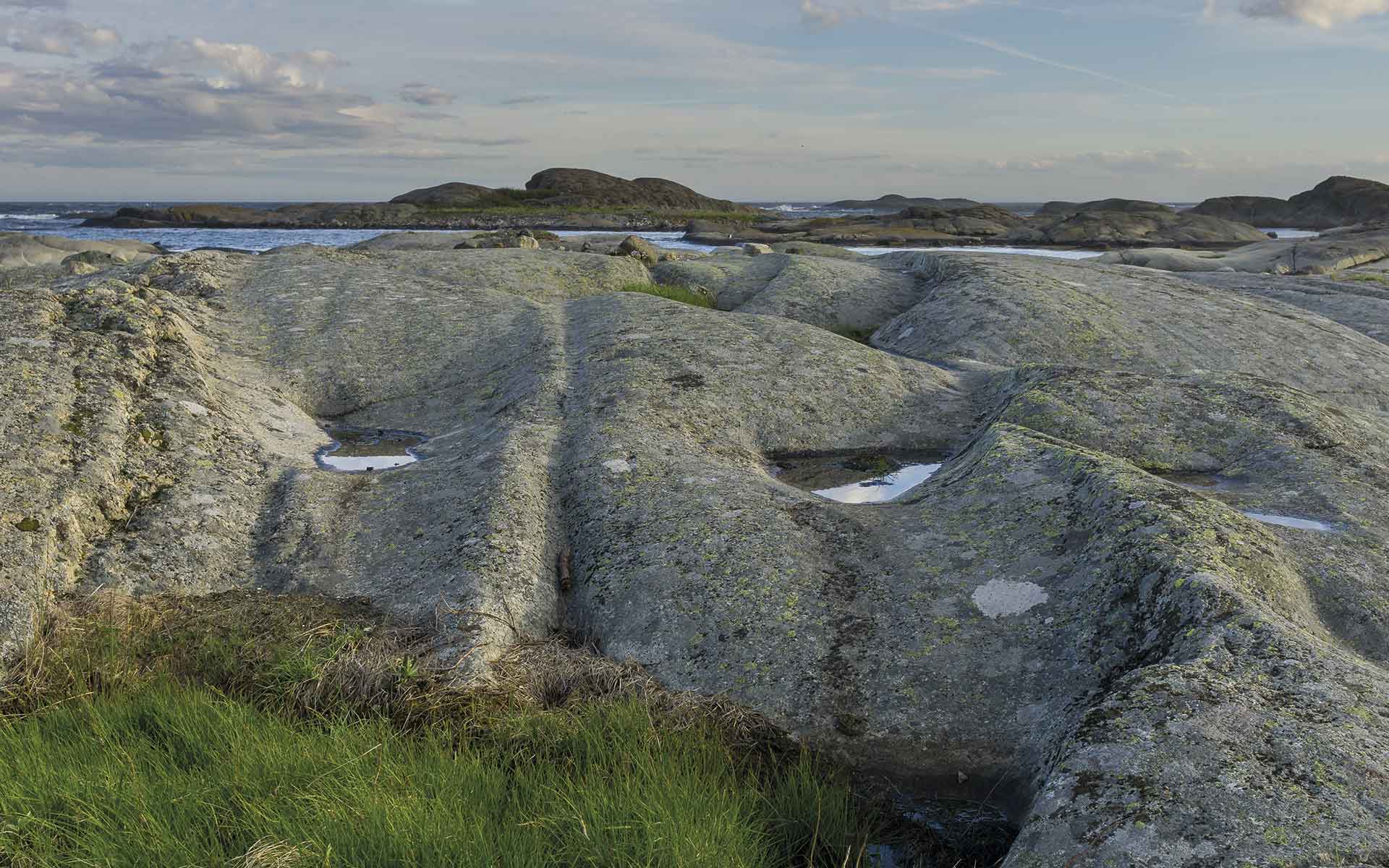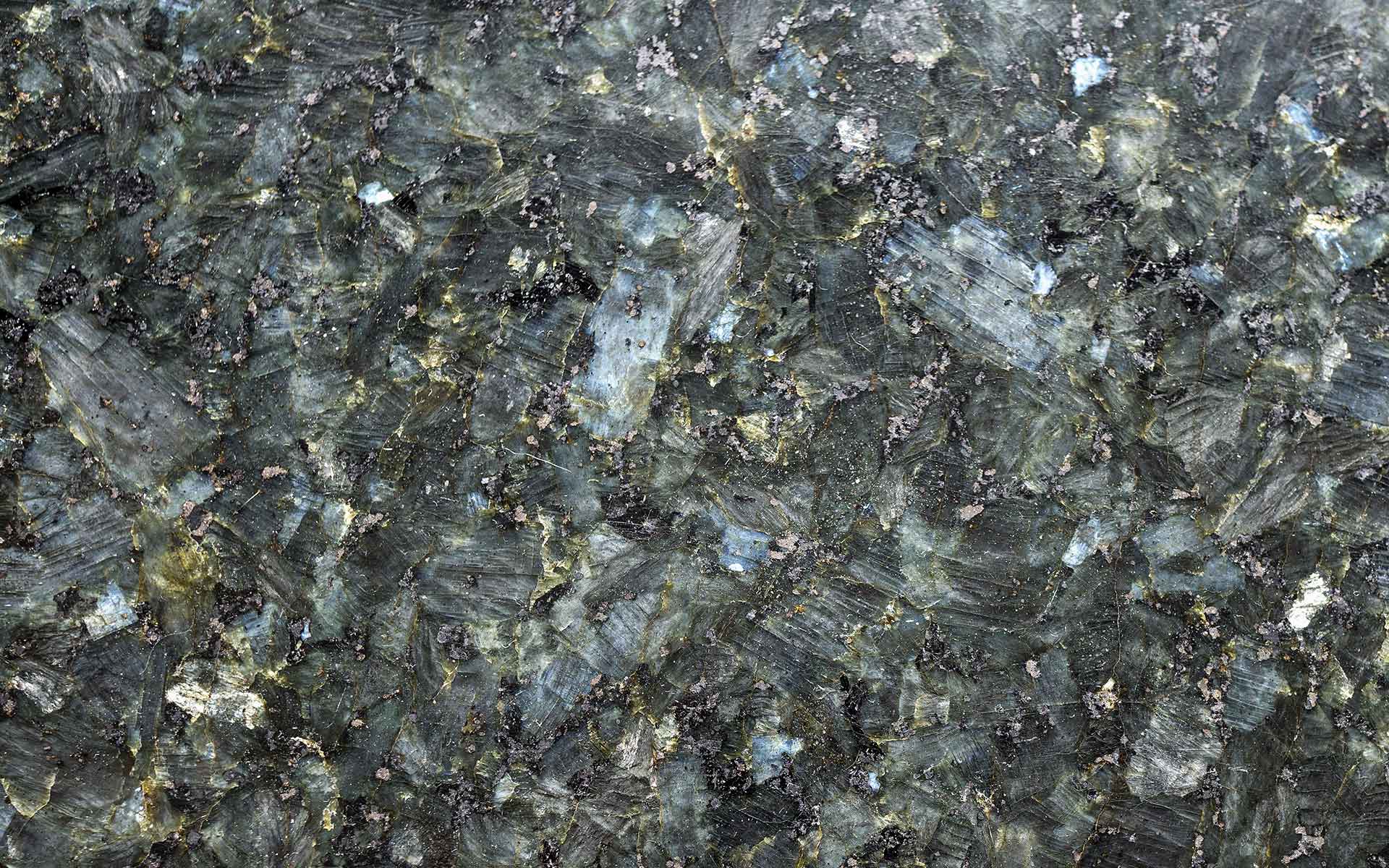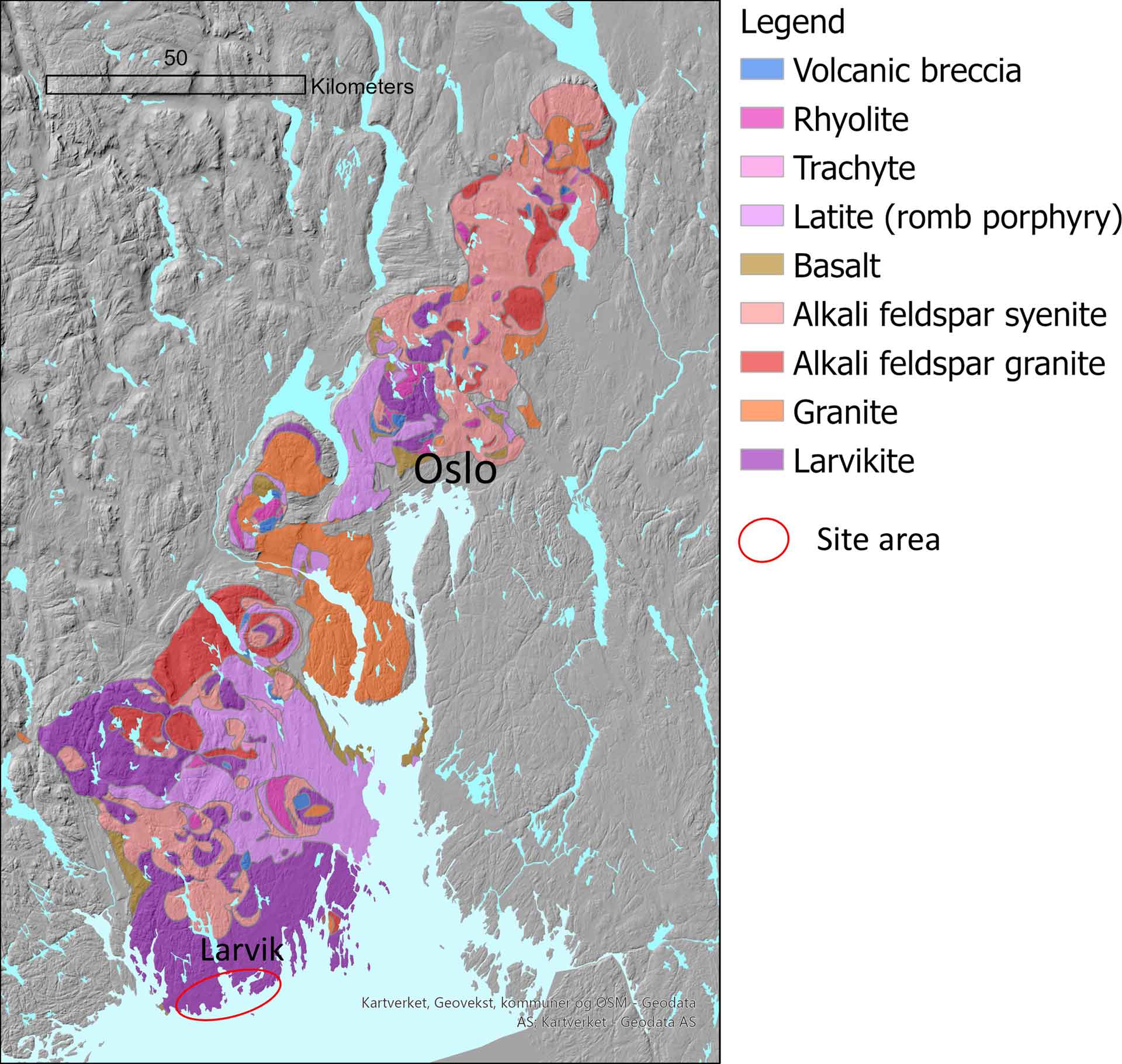
The larvikite landscape along the coast of Larvik. The rocks showing wonderful glacial features and a pegmatite to the left.
Geological Period
Permian (Cisuralian)
Main geological interest
Igneous and Metamorphic petrology
Location
Larvik municipality, Vestfold County, Norway
59º01’48” N, 10º10’48” E
The larvikite landscape along the coast of Larvik. The rocks showing wonderful glacial features and a pegmatite to the left.
One of the few places to study the blue monzonitic plutonic rocks formed beneath a continental rift environment.
“Larvikite” represents a group of monzonitic plutonic rocks formed beneath a continental rift environment. The Oslo rift is one of the few places where such deep continental rift magmatism can be studied. The larvikite complex is also important as the host of a number of scientific discoveries, such as being type area for a number of minerals and the discovery of the element Thorium. Still new minerals are documented, as alflarsenite (2008) and peterandresenite (2012), named after local collectors. Larvikite was one of the first rocks to be approved as “heritage stone”. Features of larvikite intrusions are perfectly exposed and can be studied along the coastline between Ula and Nevlunghavn village.
- Geological description
The Carboniferous-Permian Oslo Rift represents an early internal rifting on the Pangea continent that never evolved into an oceanic spreading ridge. The ancient rift valley suffered intensive volcanic activity, leaving vast deposits of alkaline lavas and pyroclastic rocks. Among the lavas, the most prominent type is latite, traditionally named “rhomb porphyry”. Larvikite is the plutonic equivalent to these porphyries. As a series of monzonitic rocks, the larvikites stands out by being primarily composed of ternary feldspars, displaying cryptoperthitic intergrowths. Interference between light waves and the intergrowth lamellae creates bright blue iridescence, which is highly appreciated in the natural stone market. Thus, larvikite is among the most attractive dimension-stone resources in the world, and it is likely to find it in a façade or kitchen top near you. The larvikite complex is a series of ring-shaped plutons becoming younger and more undersaturated from east to west. Thus, they range from quartz-bearing to nepheline-bearing. They display magmatic layering and crystal orientation patterns reflecting the overall ring structure. Larvikites also host a wide range of pegmatites, including type areas for minerals like låvenite, thorite, aegirine, mosandrite, leukophane and tritomite. Thorium was discovered in such pegmatites in the 1820’s. Along the coastline of Vestfold, the larvikites are beautifully exposed, sculptured and polished by numerous glacial episodes.
- Scientific research and tradition
From the first description of the “beauty” of the rocks and first link between plutonic and volcanic rocks by von Buch (1810), larvikite has been target for numerous studies. Brøgger (1890) provided the name and described new minerals from the pegmatites. Petersen (1978) proposed the ring-shaped plutonic evolution and Neumann (1980) added to the knowledge by providing a petrogenetic study. Dahlgren et al. (1998) dated the larvikite intrusions.
- Reference
Brögger, W.C. (1891) ‘Die Mineralien der Syentipegmatitgänge der südnorwegischen Augit-und Nephelinsyenite’, Geologiska Föreningen i Stockholm Förhandlingar, 13(2), pp. 128–131. Available at: https://doi.org/10.1080/11035899109446866.
Buch, L. von (1810) Reise durch Norwegen und Lappland. Berlin : G. C. Nauck (Ordentlichen Mitgliede der Köninglichen Academie der Wissenschaften zu). Available at: http://archive.org/details/reisedurchnorweg00buch.
Dahlgren, S., Corfu, F. and Heaman, L. (1998) ‘Datering av plutoner og pegmatitter i Larvik pluton-kompleks, sydlige Oslo Graben, ved hjelp av U-Pb isotoper i zirkon og baddeleyitt.’, in Norsk Bergverksmuseum Skrift. Kongsberg mineral symposium 1998, pp. 32–39.
Heldal, T., Meyer, G.B. and Dahl, R. (2015) ‘Global stone heritage: Larvikite, Norway’, in D. Pereira (ed.) Global Heritage Stone: Towards International Recognition of Building and Ornamental Stones. Geological Society of London Special PublicationGeological Society, London, Special Publications 407, pp. 21–34. Available at: https://doi.org/10.1144/SP407.14.
Neuman, E.-R. (1980) ‘Petrogenesis of the Oslo Region Larvikites and Associated Rocks’, Journal of Petrology, 21(3), pp. 499–531. Available at: https://doi.org/10.1093/petrology/21.3.499.
Petersen, J.S. (1978) ‘Structure of the larvikite-lardalite complex, Oslo-region, Norway, and its evolution’, Geologische Rundschau, 67(1), pp. 330–342. Available at: https://doi.org/10.1007/BF01803271.
- Author(s)
Tom Heldal.
Scientist, Geological Survey of Norway.
Kristin Rangnes.
General manager/Geologist, Gea Norvegica UNESCO Global Geopark. Norway.


